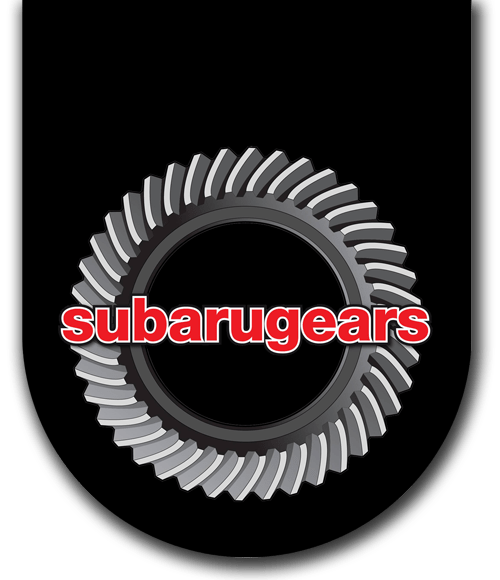NOW, THE FUN BEGINS
Know your parts, and your install will go a lot smoother.
Choose your vehicle below and we’ll layout which parts you need as well as the installation steps. Note that for some vehicles, the installation is more complex. If you need extra guidance, get in touch.
Beetle with twin cam engine (usually non-turbo) & Buggy
Requirements for a Beetle or Buggy.

Twin cam Subaru engines feature one cam per cylinder head. The belt drive system for these engines is very compact, as are the cylinder head dimensions. This makes them a reasonably simple fit into a beetle with the 5 speed, with the result being an engine that is completely under the decklid and rear guards.
With Buggies, there is no packaging issue with decklid and rear guards so standard length Subaflanges can be used with all engines in a buggy.
What you’ll need from us
1) Rear drive conversion kit (Subaflanges Kombi 100mm Standard), or fully-built reversed 2WD transmission (also Subaflanges Kombi 100mm Standard). The final drive ratio recommendation for non-turbo motors is 4.44:1 for EJ20, EJ22, 4.11:1 for EJ25. Check our calculator to plot speed vs rpm for your combination before ordering.
2) Subamount engine and transmission mount kit.
What you’ll need from other suppliers
- 100mm Kombi Inner CV joints x 2 (inner left and inner right).
- 396mm (15 5/8”) axles. These are commonly known as Kombi into Beetle Axles.

Gear shift
Subaru transmissions have an internal reverse-lockout mechanism so you cannot accidentally select reverse. Beetles have an external reverse lockout mechanism via a plate under the gear lever. This plate has tabs that require you to push the gearstick down over the tab in order to select reverse. When using a Subaru transmission, remove these tabs and re-install the plate under the gear lever. The gearshift will work as normal and retain it’s correct ‘H’ pattern.
Alternatively, you can use any of the aftermarket shifters for a more precise, ‘sporty’ feel. Simply remove their reverse-lockout mechanisms to work with the 5 speed.

Shift rod connection
This can be manufactured from the Subaru shifter knuckle, one knuckle ground down to 45 degrees to allow movement past horizontal. Weld a threaded rod to the knuckle and weld a wheelstud to your shortened VW shift rod.



Mounts
Simply bolt the Subamount to your frame horns. You can use your standard Subaru engine mounts with the Subamount.
To install the Subamount transmission mount, place your driveline in place and bolt the transmission mount to the transmission using the supplied bolts and bushes. You will see the Subamount locates solidly on the lower face of your IRS pivot boxes. Drill the 4 x holes for the locating bolts and fit up.
Clearancing
In order to fit the Subaru 5 speed into a beetle, a small amount of clearancing needs to be done one the firewall.
Firstly, at the nose of the transmission a small amount of clearancing needs to be done to the metalwork between the rear seat mounts. This can be achieved with a hammer or by cutting a small square out and welding a box cover in place.
Secondly, the top of the bellhousing and clutch fork/slave cylinder area requires a small amount of clearancing to create enough space for fitment. This can be achieved with a hammer or by cutting a small square out and welding a box cover in place.
Clutch setup
The standard cable clutch and bowden tube can be used with the Subaru transmission. It’s recommended that you use the cable clutch fork from Subarus own cable clutch transmissions. This clutch fork is longer and is designed to have a cable slotted through it. The pivot point is changed through moving the mushroom pivot bolt in the transmission bellhousing to the alternative threaded boss already provided.
Our preference is to install a hydraulic clutch system. The Subaru transmissions have a slave cylinder bolted to the top of the transmission. There are two types of transmissions with their matching flywheels, clutches and master/slave cylinders: push type and pull type.
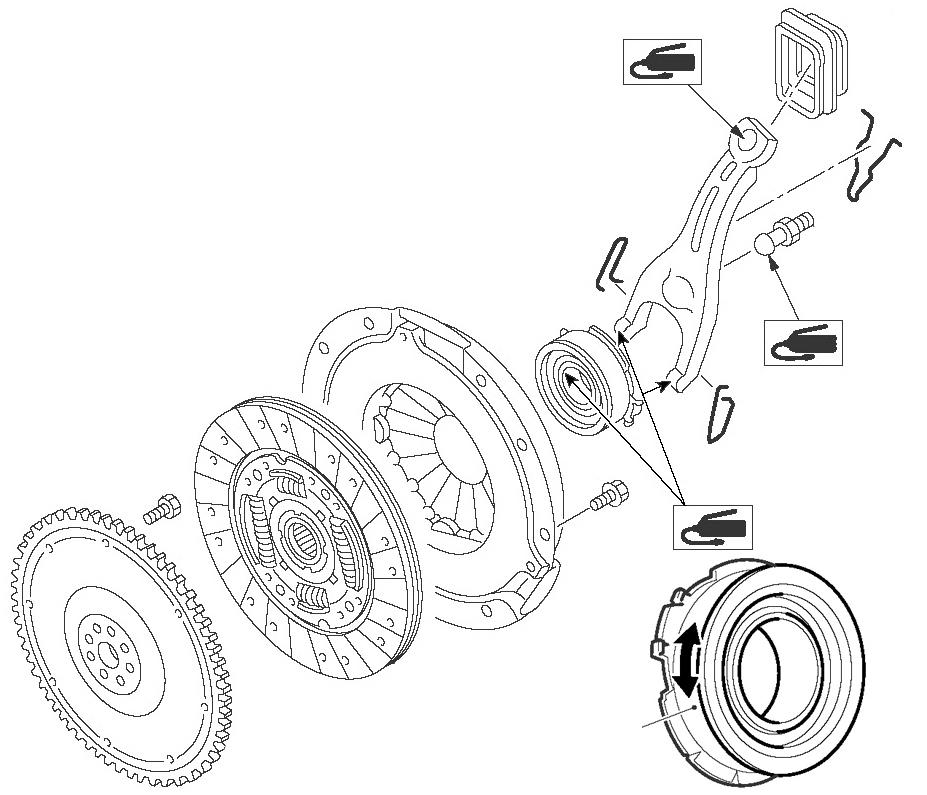
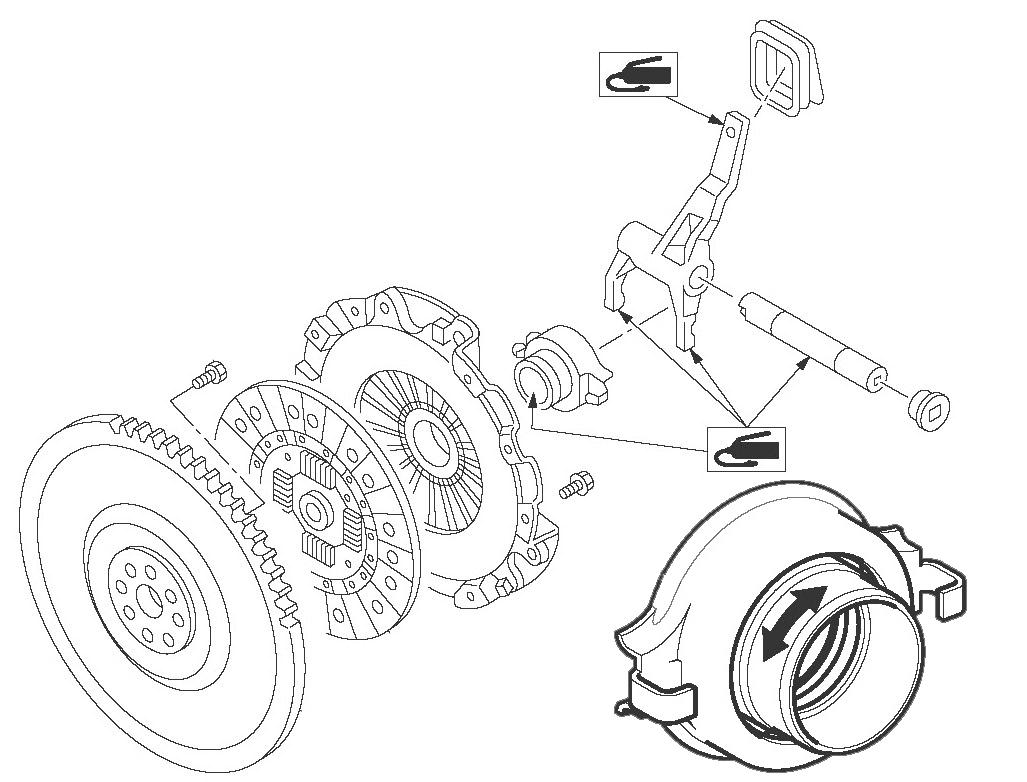
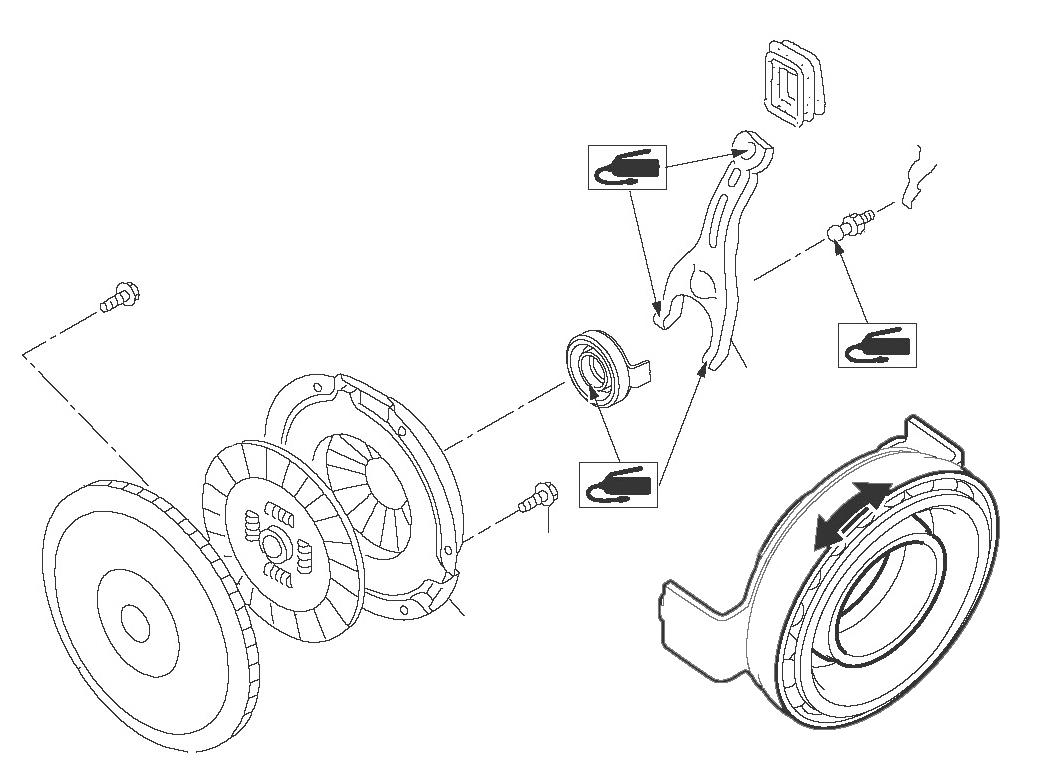
Beetle with quad cam engine (usually turbo)
Requirements for a Beetle.
Quad cam Subaru engines feature two cams per cylinder head. The belt drive system for these engines is much larger, as are the cylinder head dimensions. This makes them a less simple fit into a beetle with the 5 speed as at standard height, the cam covers interfere with the decklid and rear guards.




In order to get around this, Subarugears manufactures extended length Subaflanges. Using these extended length Subaflanges with shortened drive axles allows the engine and driveline to be mounted lower in the car as the CV joints are now outboard of the framehorns, instead of above them. When done correctly, everything fits under the decklid and rear guards.
What you’ll need from us
- Rear drive conversion kit (Subaflanges Kombi 100mm Extended or Subaflanges 930 Extended), or fully-built reversed 2WD transmission (also Subaflanges Kombi 100mm Extended or Subaflanges 930 Extended). The final drive ratio recommendation for non-turbo motors is 3.90:1 or 4.44:1 for EJ20T, EJ22T and EJ25T. Check our calculator to plot speed vs rpm for your combination before ordering.
- Subamount engine and transmission mount kit.



What you’ll need from other suppliers
- 100mm Kombi inner CV joints x 2. (inner left and inner right) or for higher power Kombi inner and outer CV joints and drive axle. For even higher power use 930 Porsche inner and outer CV joints.
- 346mm (13 3/16″) axles to suit your CV joints (splines vary between Kombi & 930 style). These are available from Sway-away in the USA or order direct from Subiworks.
Use the upper mount holes of the Subamount to lower the driveline using extended Subaflanges.



Completed installation






Bay-Window Kombi
Requirements for a Bay Kombi.
The bay-window Kombi is one of the simplest installs as it has a large engine bay and no framehorns to deal with.
What you’ll need from us
- Rear drive conversion kit (Subaflanges Kombi 100mm Standard), or fully-built reversed 2WD transmission (also Subaflanges Kombi 100mm Standard). The final drive ratio recommendation for non-turbo motors is 4.44:1 for EJ20, EJ22, EJ25. The final drive ratio for turbo motors or 6 cylinder motors is 4.11:1. Check our calculator to plot speed vs rpm for your combination before ordering.
- Subamount Bay Kombi engine and transmission mount.



Getting started
Use the Bay Window Kombi engine mount to create a secure platform on your chassis rails.
Supplied with inner and outer plates for left side and right side plus bolt-in expandable crush tubes, there is no need for welding. Simply drill a 10mm hole through the chassis rail, then redrill the outside hole to 16mm to allow the expandable crush tube to be fitted in place. Once the through-bolt pulls the internal nut in the crush tube tight, the feet expand to ensure the location of the crush tubes within the chassis beam.

Gear Shift
Subaru transmissions have an internal reverse-lockout mechanism so you cannot accidentally select reverse. Beetles have an external reverse lockout mechanism via a plate under the gear lever. This plate has tabs that require you to push the gearstick down over the tab in order to select reverse. When using a Subaru transmission, remove these tabs and re-install the plate under the gear lever. The gearshift will work as normal and retain it’s correct ‘H’ pattern.
Alternatively, you can use any of the aftermarket shifters for a more precise, ‘sporty’ feel. Simply remove their reverse-lockout mechanisms to work with the 5 speed.
In order to connect the VW shift rod to the Subaru shift rod (offset approx 60mm) customers have used the short Superbeetle steering arm with double universal joints. This requires some shortening of the Kombi outer shift tube and shift rod. It’s also good to insert/replace some poly bushes between the shift rod tube and shifter at the front and rear for a more precise shift movement.

Mounts
Simply bolt the Subamount transmission mount to your VW ‘Elephant tusk’ mounts. You can then securely mount everything into the torsion bar. In order to gain sufficient clearance for the clutch fork, hydraulic slave cylinder (if used) and Subaru starter motor, the original Kombi overhead transmission brace will require some small trimming for clearance.

Clutch setup
The standard cable clutch and bowden tube can be used with the Subaru transmission. You should use the cable clutch fork from Subarus own cable clutch transmissions — this clutch fork is longer and is designed to have a cable slotted through it. The pivot point is changed through moving the mushroom pivot bolt in the transmission bellhousing to the alternative threaded boss already provided.
Our preference is to install a hydraulic clutch system. The Subaru transmissions have a slave cylinder bolted to the top of the transmission. There are two types of transmissions with their matching flywheels, clutches and master/slave cylinders: push type and pull type.
Bay Kombis can easily have a Subaru master clutch cylinder installed below the floor, with a rod to join the bottom of the clutch pedal to the master cylinder. A hydraulic line is then run down the length of the bus to the slave cylinder mounted on the top of the transmission. The existing Kombi axles and CV joints will bolt right up.









Split-Window Kombi
Requirements for a Split-Window Kombi.
Split-Window Kombis can be more difficult to set up than Bay-Window Kombis due to the existence of framehorns and the style of IRS conversion that has been used. The height of the framehorns relative to the outer cv joints/trailing arms clashes, requiring one of two solutions:
- Remove the framehorns in the area rearwards of the IRS pivot boxes and before the transmission flanges, OR…
- Scallop the framehorns at the transmission flange area and use extended Subaflanges and shortened axles.
The option you choose affects the parts you’ll need.


Option one, removing framehorns: what you’ll need from us
- Rear drive conversion kit (Subaflanges Kombi 100mm Standard), or fully-built reversed 2WD transmission (also Subaflanges Kombi 100mm Standard). The final drive ratio recommendation for non-turbo motors is 4.44:1 for EJ20, EJ22, 4.11:1 for EJ25. Check our calculator to plot speed vs rpm for your combination before ordering.
- Subamount Kombi transmission mount.



Option one, removing framehorns: what you’ll need from other suppliers
- Bay Kombi engine mount.
Option two, scalloping framehorns: what you’ll need from us
- Rear drive conversion kit (Subaflanges Kombi 100mm Extended), or fully-built reversed 2WD transmission (also Subaflanges Kombi 100mm Extended). The final drive ratio recommendation for non-turbo motors is 4.44:1 for EJ20, EJ22, 4.11:1 for EJ25. Check our calculator to plot speed vs rpm for your combination before ordering.
- Subamount Kombi transmission mount.
- Subamount engine mount.




Gear shift
Subaru transmissions have an internal reverse-lockout mechanism so you cannot accidentally select reverse. Beetles have an external reverse lockout mechanism via a plate under the gear lever. This plate has tabs that require you to push the gearstick down over the tab in order to select reverse. When using a Subaru transmission, remove these tabs and re-install the plate under the gear lever. The gearshift will work as normal and retain it’s correct ‘H’ pattern.
Alternatively, you can use any of the aftermarket shifters for a more precise, ‘sporty’ feel. Simply remove their reverse-lockout mechanisms to work with the 5 speed.

Shift rod connection
This can be manufactured from the Subaru shifter knuckle, one knuckle ground down to 45 degrees to allow movement past horizontal. Weld a threaded rod to the knuckle and weld a wheelstud to your shortened VW shift rod.




Mounts
Firstly, to create enough space for the lowest part of the transmission in a splitty, you need to do a ‘cut and shut’ on the bracket between the framehorns. This creates space and retains strength. Now bolt the Kombi transmission mount to the torsion bar using your VW rubber mount.
If using a Bay Kombi engine mount bracket (from other supplier) mount this to your engine and drill the mount holes into your chassis rails and add crush tubes to your chassis.
If retaining scalloped frame horns, bolt the Subamount engine mount to your engine and then to the framehorns. You may find that the Subamount requires spacers between the end of the frame horns and the back of the Subamount to achieve the correct length. This will require you to use longer frame horn bolts to ensure they correctly engage in the thread of the horns and that the shank of the bolt correctly engages in the end of the frame horns. Failure to do this will mean your standard frame horn bolts will come loose and/or wreck the frame horns.


Installation
Firstly, at the nose of the transmission a small amount of clearancing needs to be done to the metalwork between the rear seat mounts. This can be achieved by cutting a small square out and welding a box cover in place.
Secondly, the top of the bellhousing and clutch fork/slave cylinder area requires a small amount of clearancing to create enough space for fitment. This can be achieved by cutting a small square out and welding a box cover in place. There are clearance challenges with the firewall and fuel tank – raising the fuel tank with spacers clears most of these issues.

Clutch setup
The standard cable clutch and bowden tube can be used with the Subaru transmission. You should use the cable clutch fork from Subarus own cable clutch transmissions — this clutch fork is longer and is designed to have a cable slotted through it. The pivot point is changed through moving the mushroom pivot bolt in the transmission bellhousing to the alternative threaded boss already provided.
Our preference is to install a hydraulic clutch system. The Subaru transmissions have a slave cylinder bolted to the top of the transmission. There are two types of transmissions with their matching flywheels, clutches and master/slave cylinders: push type and pull type.
Kombis can easily have a Subaru master clutch cylinder installed below the floor, with a rod to join the bottom of the clutch pedal to the master cylinder. A hydraulic line is then run down the length of the bus to the slave cylinder mounted on the top of the transmission.







Axles & CV joints
If using option 1, remove frame horns, then standard Bay window cv joints and axles will bolt up.
If using option 2, scalloped frame horns and extended length Subaflanges, then shorter axles will need to be ordered from Sway-away in the USA, or have a local supplier cut your Bay Kombi axles down to length and respline them. DO NOT ‘cut and shut’ re-weld axles as they will break and/or cause damage to ring and pinion quickly if they are out of balance.


Vanagon 2WD
Requirements for a Vanagon.
The Vanagon installation can be a challenge for two reasons. Firstly, the nose of the transmission is close to the transverse chassis beam on the Vanagon, illustrated with a standard Vanagon mount and Subarugears Kombi transmission mount. Secondly, the original Vanagon transmission is a side-shifter instead of a nose-shifter. Using the standard shifter without modification results in a left-to-right reversed H pattern.

What you’ll need from us
- Rear drive conversion kit (Subaflanges Kombi 100mm Standard), or fully-built reversed 2WD transmission (also Subaflanges Kombi 100mm Standard). The final drive ratio recommendation for non-turbo motors is 4.44:1 for EJ20, EJ22, 4.11:1 for EJ25. Final recommendations for turbo and 6 cylinder motors is 3.9:1 or 4.11:1. Check our calculator to plot speed vs rpm for your combination before ordering.
- Subamount kombi transmission mount.
- Subashifter Vanagon to correct the ‘H’ pattern of your shifter – used in conjunction with your Vanagon transmission ball and socket.



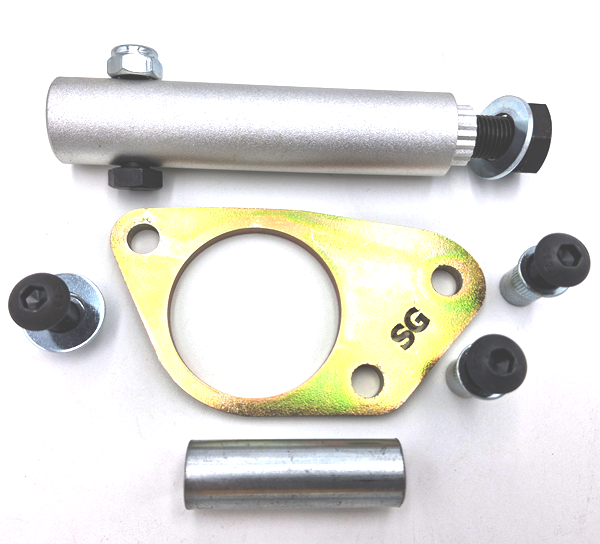
What you’ll need from other suppliers
- 2 x Automatic length Vanagon (left hand side when in car) short axles. The correct length is 520.0mm or 20.5 inches These are available new from EMPI (part number 90-6804) if you are unable to source VWAG ones.
- Vanagon Subaru engine cradle to mount the engine.
- Subaru BRZ hydraulic slave cylinder. The VW master cylinder to Subaru Liberty/Legacy/Impreza/WRX/Outback/Forester slave cylinder bore sizes are a mis-match and result in a heavy (but useable) clutch pedal. Changing to the BRZ slave cylinder at 21mm bore size (instead of 19mm bore size) provides a much better matched setup, with comfortable clutch feel and travel. NABCO part number 114130151.

Clutch setup
The Subaru transmissions have a slave cylinder bolted to the top of the transmission. There are two types of transmissions with their matching flywheels, clutches and master/slave cylinders: push type and pull type.



Syncro 4WD
Requirements for the Syncro.
The Syncro is a unique challenge as it has an AWD system.
In order to allow for Subaru transmission and transmission/differential replacement, we have had to create a number of new products.


- 4.86:1 ratio ring and pinion. This is not a standard Subaru ratio, however it is the standard ratio of the majority of Syncro front differential ratios (excluding AUS). Matching front and rear diff ratios is necessary.
- Syncro kit. This consists of a specific front Subaplate with bearing support and a front output shaft to match. Installing this kit bypasses the Subaru internal transfer gears and places the driveshaft output at the lower portion of the Subaru transmission, passing under the Suncro transverse beam. It also corrects the driveshaft rotation of the Subaru transmission to match that of the VW Syncro transmission.
- Subamount Syncro transmission mount. These bolt to the left and right side of the center differential casing and use the stock VW Syncro chassis mounts.
Note : In order to use the Subaru AWD drivetrain in a Syncro, your 4.86:1 front VW differential MUST have it’s Viscous coupling removed and replaced with a solid shaft.
Type Three / Karmann Ghia
Requirements for a Type Three / Karmann Ghia.
There are two ways you can go about installation for this vehicle. Framehorn version or non-framehorn version — the option you choose affects the parts you’ll need.
Option one, framehorn: what you’ll need from us
- Rear drive conversion kit (Subaflanges Kombi 100mm Standard), or fully-built reversed 2WD transmission (also Subaflanges Kombi 100mm Standard). The final drive ratio recommendation for non-turbo motors is 4.44:1 for EJ20, EJ22, 4.11:1 for EJ25. Check our calculator to plot speed vs rpm for your combination before ordering.
- Subamount engine and transmission mount kit.



Option one framehorn what you’ll need from other suppliers
- 100mm Kombi Inner CV joints x 2 (inner left and inner right).
- 396mm (15 5/8”) axles. These are commonly known as 091 Kombi into Beetle Axles.
Option two, non-framehorn: what you’ll need from us
- Rear drive conversion kit (Subaflanges Kombi 100mm Standard), or fully-built reversed 2WD transmission (also Subaflanges Kombi 100mm Standard). The final drive ratio recommendation for non-turbo motors is 4.44:1 for EJ20, EJ22, 4.11:1 for EJ25. Check our calculator to plot speed vs rpm for your combination before ordering.
- Subamount Kombi transmission mount.



Option two: non-framehorn: what you’ll need from other suppliers
- 100mm Kombi Inner CV joints x 2 (inner left and inner right).
- 396mm (15 5/8”) axles. These are commonly known as 091 Kombi into Beetle Axles.
- Bay Kombi engine mount (may require modification to fit type three chassis rail width).
Gear shift
Subaru transmissions have an internal reverse-lockout mechanism so you cannot accidentally select reverse. Beetles have an external reverse lockout mechanism via a plate under the gear lever. This plate has tabs that require you to push the gearstick down over the tab in order to select reverse. When using a Subaru transmission, remove these tabs and re-install the plate under the gear lever. The gearshift will work as normal and retain it’s correct ‘H’ pattern.
Alternatively, you can use any of the aftermarket shifters for a more precise, ‘sporty’ feel. Simply remove their reverse-lockout mechanisms to work with the 5 speed.

Shift rod connection
This can be manufactured from the Subaru shifter knuckle, one knuckle ground down to 45 degrees to allow movement past horizontal. Weld a threaded rod to the knuckle and weld a wheelstud to your shortened VW shift rod.




Mounts
Simply bolt the Subamount to your frame horns. You can use your standard Subaru engine mounts with the Subamount.
To install the Subamount transmission mount, place your driveline in place and bolt the transmission mount to the transmission using the supplied bolts and bushes. You will see the Subamount locates solidly on the lower face of your IRS pivot boxes. Drill the 4 x holes for the locating bolts and fit up.









Clutch setup
The standard cable clutch and bowden tube can be used with the Subaru transmission. You should use the cable clutch fork from Subarus own cable clutch transmissions — this clutch fork is longer and is designed to have a cable slotted through it. The pivot point is changed through moving the mushroom pivot bolt in the transmission bellhousing to the alternative threaded boss already provided.
Our preference is to install a hydraulic clutch system. The Subaru transmissions have a slave cylinder bolted to the top of the transmission. There are two types of transmissions with their matching flywheels, clutches and master/slave cylinders: push type and pull type.



